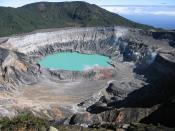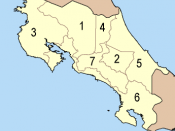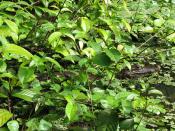Malaria Outbreak in Costa Rica - April 1991 (Essay)
On April 22, 1991 around 10:00 pm, an earthquake took place in Limon, Costa Rica with a magnitude of 7.6. The earthquake was ca (Earthquake Facts & Statistics, 2005)used by the collision of the two main tectonic plates around Costa Rica, the Cocos plate (Pacific) and the Atlantic plate. Seismic waves were caused when the friction between the Atlantic and Pacific plates could no longer build up and had to be released, causing the earthquake. The Atlantic region of the country suffered great damage to it's roads, reefs, and buildings, but the other regions of Costa Rica weren't affected. The earthquake left 27 people dead, 400 injured and 13,000 homeless in Limon, and 75 people dead in total including the surrounding areas (Natural Phenomena: Earthquakes, floods, etc.). As a result of the earthquake, floods also took place throughout the region as there were major imbalances of water following the quake.
The earthquake in Costa Rica caused an inevitable chain reaction, after the quake came floods, and after the floods came a large increase in breeding grounds for mosquitoes, which ultimately caused an outbreak of malaria, a vector borne disease. Malaria outbreaks are fairly common occurrences following large floods, as new habitats and breeding sites are more easily formed due to these large floods. In this case, the earthquake and floods in Costa Rica resulted in the crowding of infected and susceptible hosts (mosquitoes), a weakened public health infrastructure, and interruptions of the control programs that were currently in place (Malaria, 2012).
Malaria, being a vector born disease, began to spread in Costa Rica via mosquitoes, which are vector species. The mosquitoes carry the disease in their saliva and can transfer it to humans. When mosquitoes make an incision in the...


